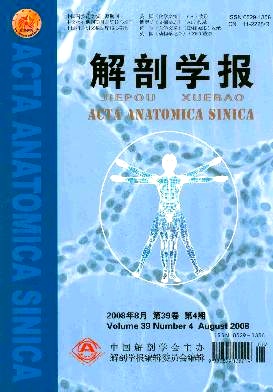|
|
MODIFIED RECOMBINANT HUMAN aFGF PROTECTS TYROSINE HYDROXYLASE NEURONS IN SUBSTANTIA NIGRA OF PARKINSON DISEASE RATS FROM LOSS
2007, 38 (3):
253-258.
doi:
Objective To observe the changes of rotation behavior and tyrosine hydroxylase immunopositive neurons and investigate how Mrh-aFGF affects them in substantia nigra of Parkinson disease rats. Methods After building a rat model of Parkinson disease by injecting 6OHDA into substantia nigra and ventral tegmental area, we used Mrh-aFGF to intervene rats by lateral ventricle injection to observe how behavior of rats induced by apomorphine and tyrosine hydroxylase immunopositive neurons in substantia nigra of rats changes, then quantitatively analyzed the change of tyrosine hydroxylase immunopositive neurons. Results Rotation behavior was not found in control group, otherwise, actuation time was shorted, time length was prolonged, and average velocity of rotation was accelerated in Parkinson disease rats(P<0.01). Compared with PD group, rotation behavior of rats treated by using NS was not improved, however, rats treated with Mrh-aFGF, showed lengthened actuation time, shorted time length and velocity(P<001). With regard to immunopositive neurons of tyrosine hydroxylase, their numbers kept in a similar level in uninjured side of all groups, and no changes were found in bilateral substantia nigra of control group, however, the immunopositve neurons were decreased significantly in Parkinson disease, NS and MrhaFGF group (P<0.01). Regarding the injured side, tyrosine hydroxylase immunopositive neurons were gradually decreased in PD group(P<0.01), and similar changes were manifested in NS group. After treated with Mrh-aFGF, the structure of substantia nigra was significantly improved and the number of tyrosine hydroxylase neurons was increased, compared with Parkinson disease and NS group(P<0.01). Conclusion Mrh-aFGF could protect immunopositive neurons of tyrosine hydroxylase from loss and improve the rotation behavior of Parkinson disease rats
Related Articles |
Metrics
|


